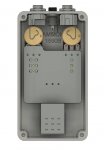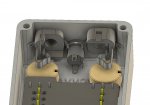Bravin Neff
Member
Does anyone have a source for a 9V power jack that fastens from the outside? By *small* I mean not one of the switching kinds. Something like this but with the nut on the outside:
Example
Side note: I can't for the life of me understand why the majority (that I am able to find) seem to fasten from the inside, meaning that if you want to remove the PCB you have to unsolder the power jack. Surely I'm not the only one who cares about this?
Example
Side note: I can't for the life of me understand why the majority (that I am able to find) seem to fasten from the inside, meaning that if you want to remove the PCB you have to unsolder the power jack. Surely I'm not the only one who cares about this?






